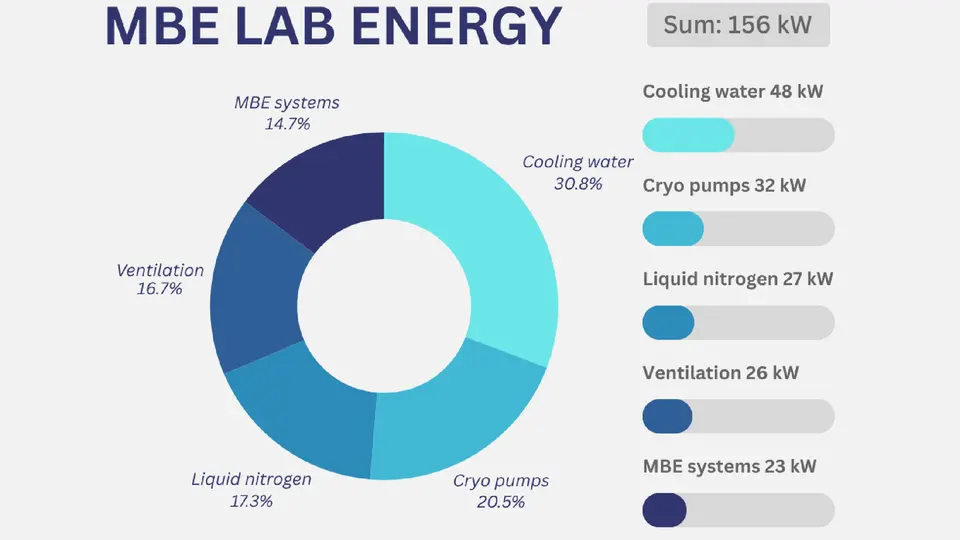Powering Down Without Compromise: PDI Leads the Way in Energy-Efficient MBE Lab Operations
/ Announcements
As energy prices climb and the climate crisis intensifies, research institutions around the world are facing growing pressure to reduce their environmental footprint—without compromising scientific output. Among the most energy-intensive facilities in advanced materials research are molecular beam epitaxy (MBE) laboratories, where ultra-high vacuum systems and cryogenic pumps operate around the clock to grow high-purity semiconductor structures. Now, a team of researchers and technicians at the Paul-Drude-Institut für Festkörperelektronik (PDI) in Berlin has demonstrated that meaningful reductions in laboratory energy use are both feasible and impactful.
In a newly published technical note in IOP Nano Express, the PDI team presents a detailed account of their efforts to measure, analyze, and reduce energy consumption in their MBE facility. Their findings offer a valuable blueprint for other institutions looking to lower operational costs and reduce greenhouse gas emissions, without sacrificing research capabilities.
The study begins with a comprehensive energy audit of PDI’s MBE lab, which houses 13 growth chambers. During full operation, the lab was found to consume 156 kilowatts of power. Surprisingly, the majority of this energy—85%—was not used by the MBE growth systems themselves, but by the supporting infrastructure. The largest share went to cooling water systems, which accounted for 31% of the total energy demand. Cryo pumps followed at 20%, with 17% consumed by liquid nitrogen and another 17% by the laboratory’s ventilation systems. The MBE systems, often assumed to be the main energy drivers, were responsible for just 15% of the total load.
To address this imbalance, the team implemented a two-pronged strategy: procedural optimization and targeted hardware upgrades. Operationally, they reduced ventilation during non-working hours and turned off cryo pumps and liquid nitrogen systems when not in active use. Technically, they replaced some of the most energy-hungry components—namely, the cryo pumps—with more efficient turbo pumps, which consume just a fraction of the energy under low gas-load conditions. They also removed unnecessary ventilation filters to reduce resistance and energy demand on fan systems.
These measures resulted in a measurable reduction in overall energy use, particularly through the introduction of turbo pumps, which alone significantly lowered the electricity required for vacuum maintenance. The PDI team emphasizes that some of the steps taken required only moderate investment and could be adopted by similar labs worldwide with relative ease.
The relevance of this work extends beyond the walls of any single institution. With hundreds of MBE facilities operating globally and running 24/7, the cumulative impact of such improvements could be substantial. The PDI study not only highlights where energy is typically consumed in MBE labs, but also offers a clear, data-driven roadmap for how that consumption can be meaningfully reduced.
The full study, titled Efforts to reduce the energy needed for the operation of our molecular beam epitaxy lab, is available open access in Nano Express and includes detailed breakdowns that can provide guidance for labs looking to adopt more sustainable practices.
Read the full paper here.
Title: Efforts to reduce the energy needed for the operation of our molecular beam epitaxy lab
Authors: Oliver Bierwagen, Hans-Peter Schönherr, Sebastian Heinitz, Steffen Behnke, Claudia Herrmann, Jörg Pfeiffer, Carsten Stemmler and Lutz Geelhaar
Source: Nano Ex., 6, 036001 (2025)
DOI: 10.1088/2632-959X/ade7a5
